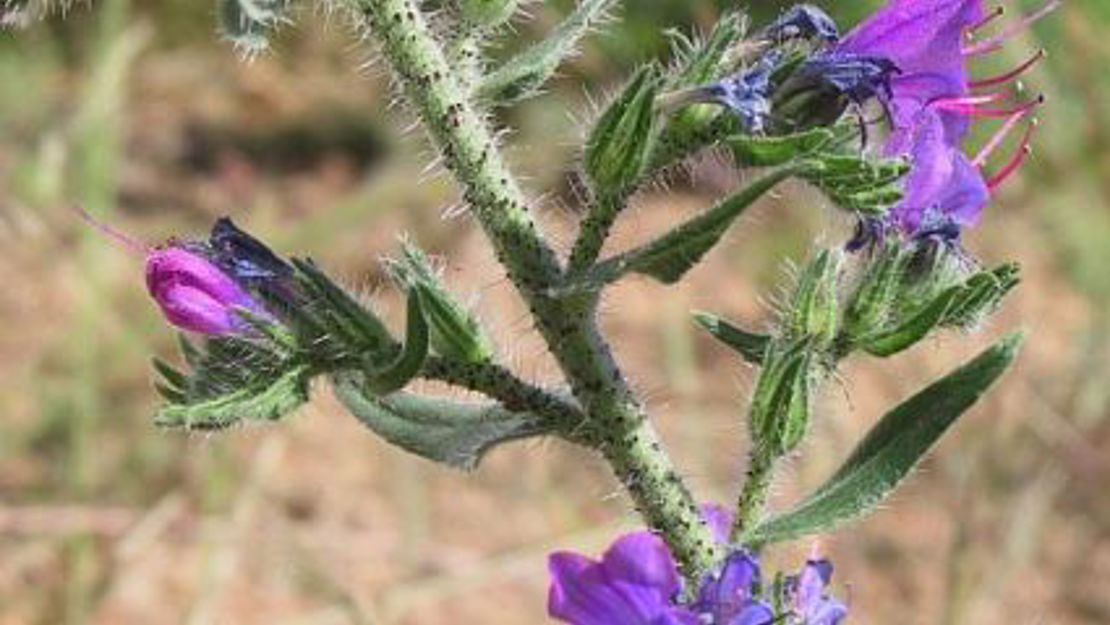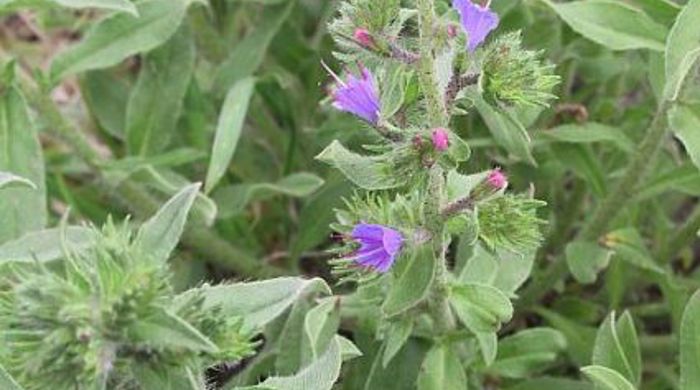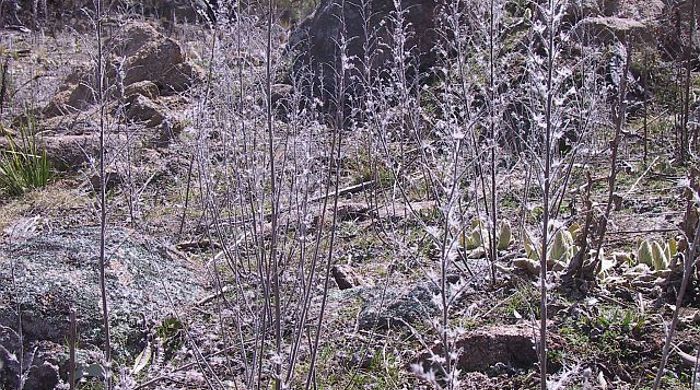Echium vulgare
Viper's bugloss
Also known as:
Blueweed
Family: Boraginaceae
Origin: Eurasia

Regional Pest Management Plan (RPMP) status
- Not a legally declared pest
General description
Erect biennial or perennial herb < 1.2. m tall. Stems are stiff and covered in bristly hairs. Leaves are hairy, stalkless and initially < 15 cm long, elongated and produced in a basal rosette, with bumpy upper surfaces. Later leaves are borne on the stem and are smaller and alternate. Flowers are pink in bud, becoming blue, tubular and borne in tapering spike-like heads in November – January.
What you need to know
Although viper’s bugloss is not a legally declared pest plant, it may still be invasive in some situations. Consider lower-risk alternatives for your garden, such as native plants.
Habitats
Disturbed sites, riparian margins, grassland, pasture, gardens, wasteland, roadsides.
Dispersal
Seeds dispersed by wind, water and animals. Human-mediated dispersal through dumping of garden waste.
Impact on environment
Can form dense infestations, competing with native vegetation. Reduces pasture productivity and can be poisonous to livestock.
Control
Site Management
Follow up treated areas 3 times per year. Encourage natural regeneration of native plants or replant treated areas where possible after 2-3 treatments to establish dense ground cover and minimise reinvasion.
Recommended approaches
Physical control
Method: Dig out.
Plant parts requiring disposal: Seeds.
Disposal options: Remove to greenwaste or landfill.
Biocontrol
Biocontrol is currently not available for this species.
Community agrichemical control recommendations
Basic Growsafe certified: Foliar spray seedlings with 1g metsulfuron-methyl per 10L of water.
Caution: When using any herbicide or pesticide please read the label thoroughly to ensure that all instructions and safety requirements are followed.






